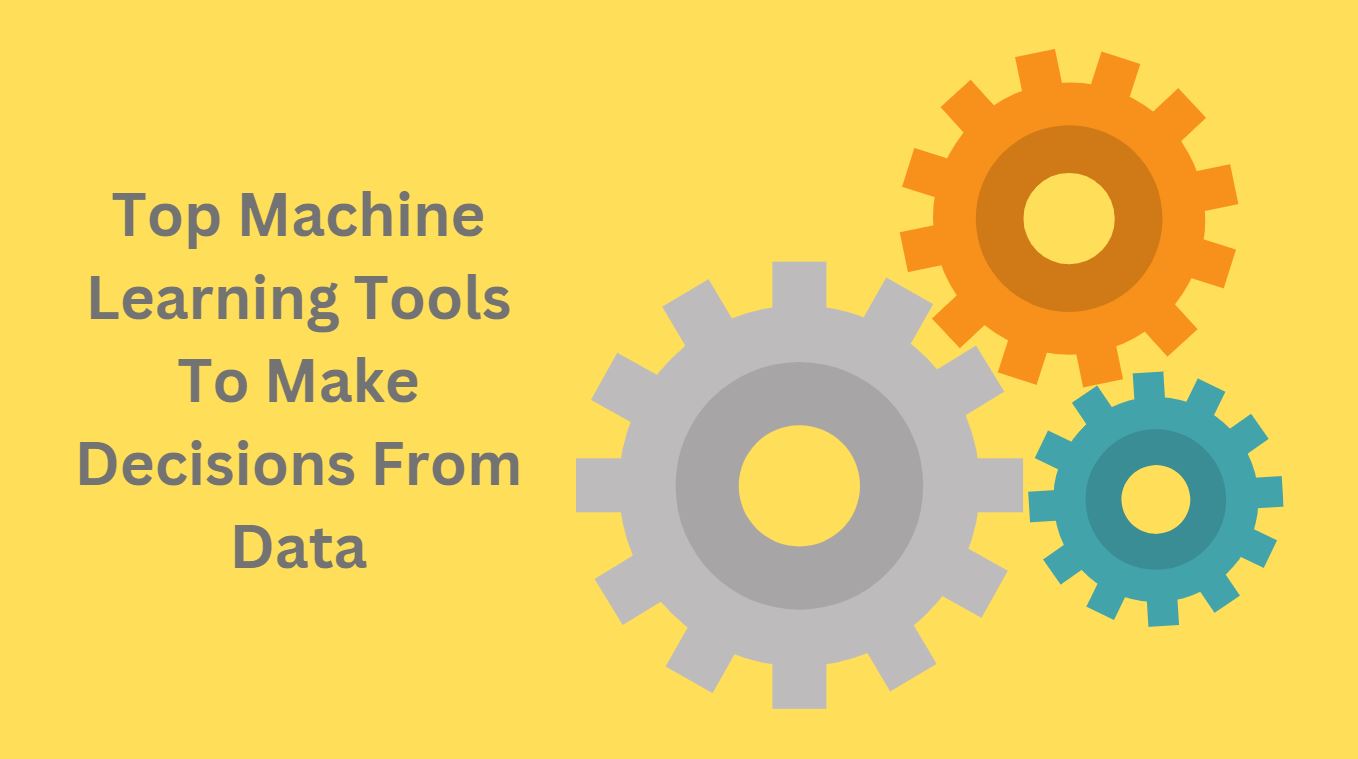- Likes
- Followers
- Followers
- Followers
- Subscribers
- Followers
- Members
- Followers
- Members
- Subscribers
- Subscribers
- Posts
- Comments
- Members
- Subscribe
Top Machine Learning Tools To Make Decisions From Data

If you are data science and machine learning professionals and looking for the top machine learning tools then you are at the right place, I’ll help you to explore these machine learning tools in this article. Machine learning, a link between Data Science and Artificial Intelligence, enables computers to learn and make decisions from data. It has revolutionized industries across the globe. Behind every successful machine learning project lies a set of powerful tools that facilitate data manipulation, model creation, and insights extraction.
Earlier to this article, I’ve given examples of Data Science tools and how data science is different from Machine Learning. Also, you can refer the article on how Python language is helpful in data science and machine learning.
In this article, we embark on a journey through the realm of machine learning tools, exploring their functionalities and their role in shaping the future.
1. Scikit-Learn – The Versatile Workhorse
A variety of methods for classification, regression, clustering, and other tasks are available in the open-source Scikit-Learn machine learning toolkit, which is built on top of Python code. Practitioners love it because of its consistent API design and user-friendly UI. Scikit-Learn gives you the resources to investigate the field of machine learning, regardless of your experience level.
2. TensorFlow – Empowering Deep Learning
Google’s TensorFlow (https://www[dot]tensorflow[dot]org/) is a deep learning powerhouse. Complex neural networks may be created for tasks like image identification and natural language processing because to their adaptable architecture. TensorFlow’s community, wealth of resources, and support for production deployment are the main reasons for its popularity.
3. PyTorch – A Deep Learning Pioneer
PyTorch is a popular tool among researchers because of its versatility and ease of use. It is well-known for its dynamic computation graph. Users can easily create complex models with its user-friendly UI. PyTorch is a major contributor to the advancement of deep learning because of its strong research focus.
4. Keras – The Beginner’s Gateway to Deep Learning
Posts You May Like
Often used in conjunction with TensorFlow, Keras streamlines the deep learning model creation process. Because of its high-level API, which isolates complexity, it’s a great option for people who are unfamiliar with neural networks. Keras’s easy-to-use interface speeds up model prototyping and exploration.
5. XGBoost – Boosting Performance with Gradient Boosting
The gradient boosting library XGBoost is well-known for its effectiveness in predictive modeling. When working with structured data, it performs exceptionally well, yielding precise outcomes in tasks like regression and classification. What distinguishes it is its ability to interpret feature importance and handle missing values.
6. Pandas – The Data Wrangling Hero
Pandas is an analytical and data manipulation package that makes dealing with structured data easier. Its DataFrame object makes data exploration, processing, and cleaning simple. Pandas is an essential tool because to its efficiency in managing massive datasets and data integration.
7. NLTK and SpaCy – Navigating Natural Language Processing
NLP (natural language processing) needs certain tools, which NLTK and SpaCy provide. A full package for text analysis and processing is provided by NLTK, whereas SpaCy specializes in high-speed, production-ready NLP tasks. The process of drawing conclusions from textual data is made easier by these libraries.
8. Matplotlib and Seaborn – Visualizing Insights
Visualizing data is essential to comprehending and conveying outcomes. Comprehensive tools for producing a large variety of graphs and visualizations are offered by Matplotlib and Seaborn. These packages enable users to create understandable, informative graphics out of complex data.
Conclusion
The foundation of innovation is machine learning, which allows academics and data scientists to extract meaningful insights from large, complicated datasets. Each tool contributes differently to the field’s advancement, from TensorFlow and PyTorch’s deep learning capabilities to Scikit-Learn’s adaptability. These machine learning technologies enable professionals to design a future powered by insights derived from data as the field of machine learning continues to grow. Although the article provides a summary of the most important machine learning technologies, the subject is dynamic and new tools and libraries are always being developed.
For the professionals who are pursuing machine learning/data science as a career, should always remain updated with the latest developments through the journals published online and the latest research on this field.
Image credit- Canva


Comments are closed.